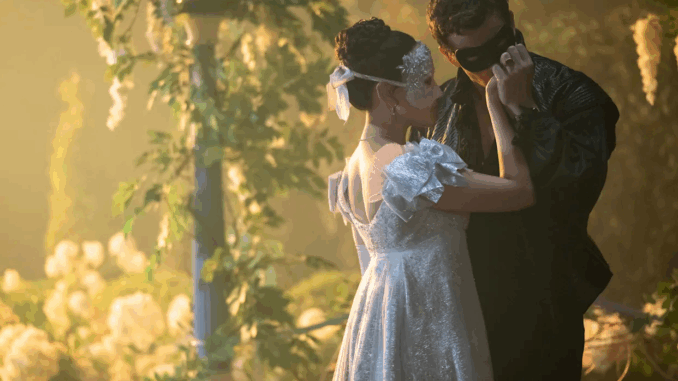
When Bridgerton premiered, no one expected it to do more than entertain viewers with love triangles and period costumes. Instead, it sparked a cultural movement. Within weeks, social media transformed into a swirling parade of lace gloves, pearl-studded hairstyles, corsets, opulent picnics, and dreamy pastel aesthetics. This movement earned its own name: Regencycore—a modern reimagining of 19th-century aristocratic fashion.
But how did a TV series set in 1813 become one of the biggest style influences of the 21st century?
The answer lies in Bridgerton’s perfect fusion of fantasy, romance, and beauty. Viewers are captivated by the show’s ability to turn ordinary moments—walking in a garden, writing a letter, sipping tea—into something magical. At its core, Regencycore is not just about clothes. It’s about emotion. It’s about stepping away from the fast-paced, digital world and entering a softer, more poetic space.
Fashion brands quickly sensed the trend. Within months of the show’s release, searches for corsets skyrocketed worldwide. Retailers restocked empire-waist dresses, puff sleeves, embroidered cardigans, and floral pastels. TikTok exploded with tutorials on “how to dress like Daphne Bridgerton” or “Kate Sharma core.” Meanwhile, Pinterest boards featuring “Regency picnics,” “duchess hair,” and “bridgerton bedrooms” multiplied overnight.
Even more surprisingly, the aesthetic wasn’t limited to clothing. It spilled into décor: candlelit rooms, lace curtains, pastel florals, ornate mirrors, and vintage tea sets. People began hosting Bridgerton-themed parties, book clubs, and photoshoots. Influencers documented their transformations, complete with slow-motion twirls and orchestral pop music.
 Why is this aesthetic so appealing? One reason is nostalgia—but not for the actual Regency era. Instead, it’s nostalgia for fantasy. Regencycore allows people to imagine themselves in a world of love letters, chivalry, slow-burn romance, and handwritten promises. It is elegance without strict historical expectations, curated beauty without the limitations of realism.
Why is this aesthetic so appealing? One reason is nostalgia—but not for the actual Regency era. Instead, it’s nostalgia for fantasy. Regencycore allows people to imagine themselves in a world of love letters, chivalry, slow-burn romance, and handwritten promises. It is elegance without strict historical expectations, curated beauty without the limitations of realism.
Another reason is inclusivity. Unlike traditional period drama aesthetics, Bridgerton’s style is accessible to people of all backgrounds. The show reimagines history with diverse casting, modern music, and vibrant colors—inviting everyone to join the fantasy. This open-minded approach inspired fans around the world to reinterpret the style in ways that reflect their cultures and personal tastes.
The beauty industry also joined the Regencycore wave. Soft rosy blush, glossy lips, delicate eyeliner, and shimmering highlighter became staples of the “Bridgerton glow.” Hairstylists recreated Kate’s elegant waves, Eloise’s curls, and Daphne’s iconic baby bangs. Countless makeup artists posted tutorials labeled “Regency makeup routine,” attracting millions of views.
What sets this aesthetic apart from other trends is its emotional depth. Regencycore is a form of escapism—a romantic rebellion against harsh, chaotic modern life. It allows people to celebrate softness, tradition, and fantasy in a world that often feels too busy and too digital.
Some critics argue the trend glosses over historical realities, but that’s precisely the point: the aesthetic is not about history. It’s about storytelling, imagination, and creativity.
Even now, each new season of Bridgerton revives and reinvents the movement. Kate and Anthony’s fire-and-passion aesthetic reintroduced jewel tones and bold colors. Colin and Penelope’s season brought in brighter palettes and shimmering gowns. Every storyline redefines the visual identity of the show.
In the end, Bridgerton didn’t just entertain viewers—it gave them a fantasy they could live inside. Whether through fashion, décor, music, or photography, Regencycore remains a symbol of beauty, softness, and self-expression.
